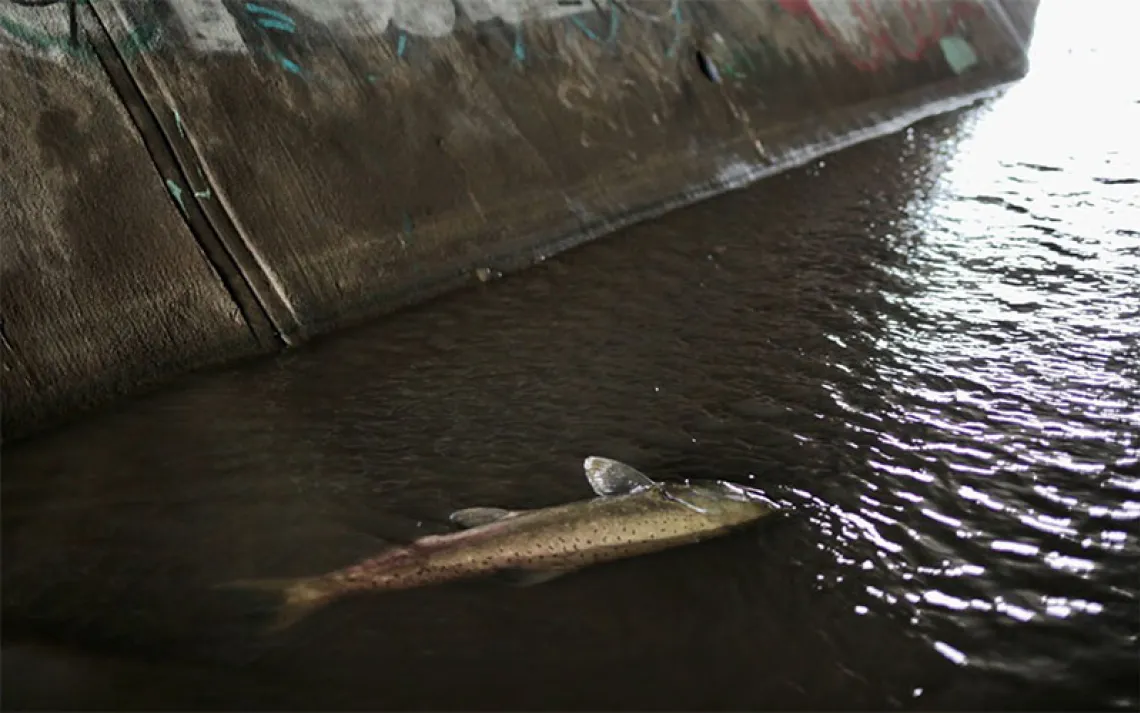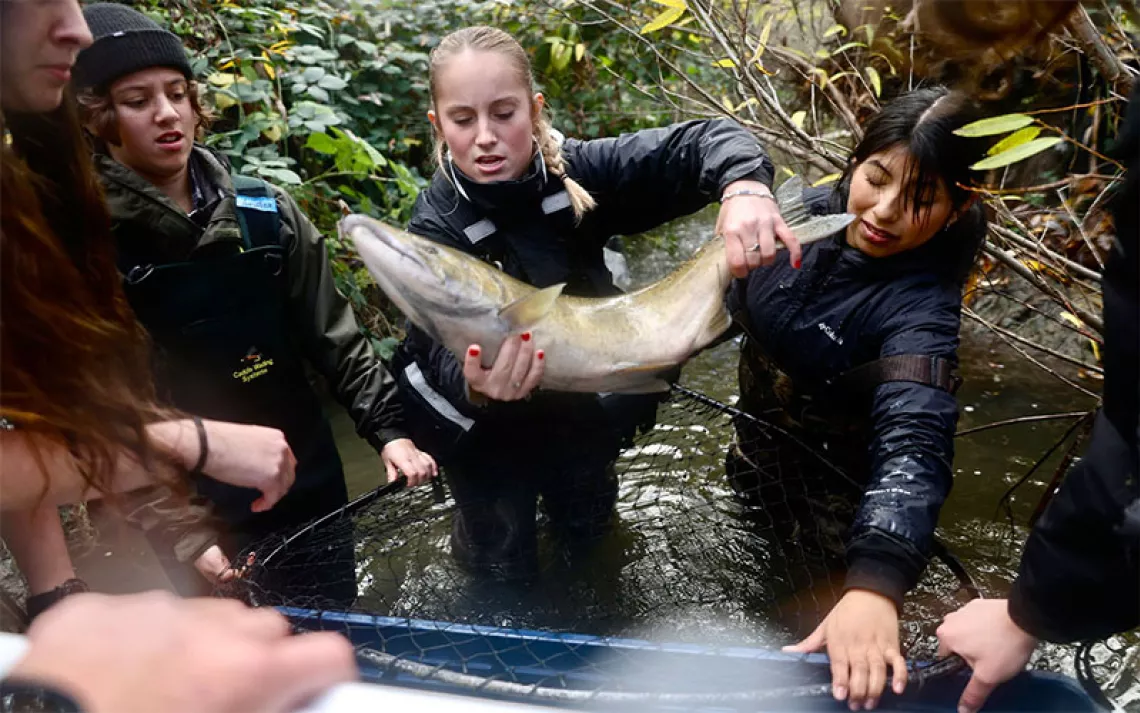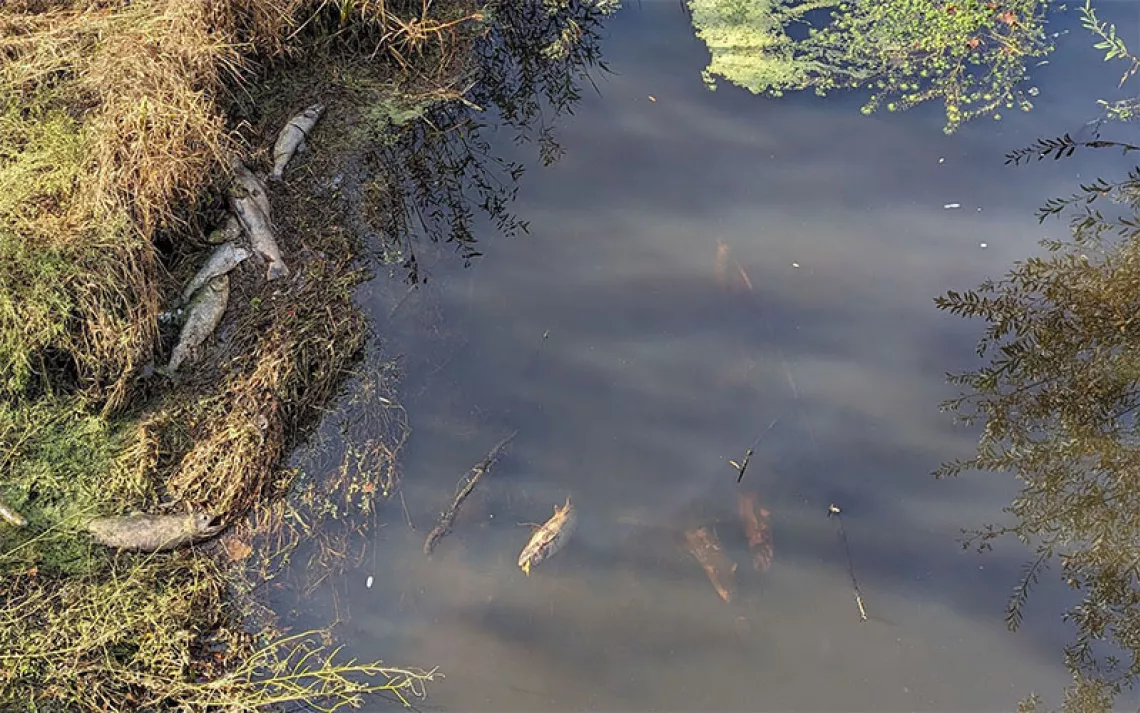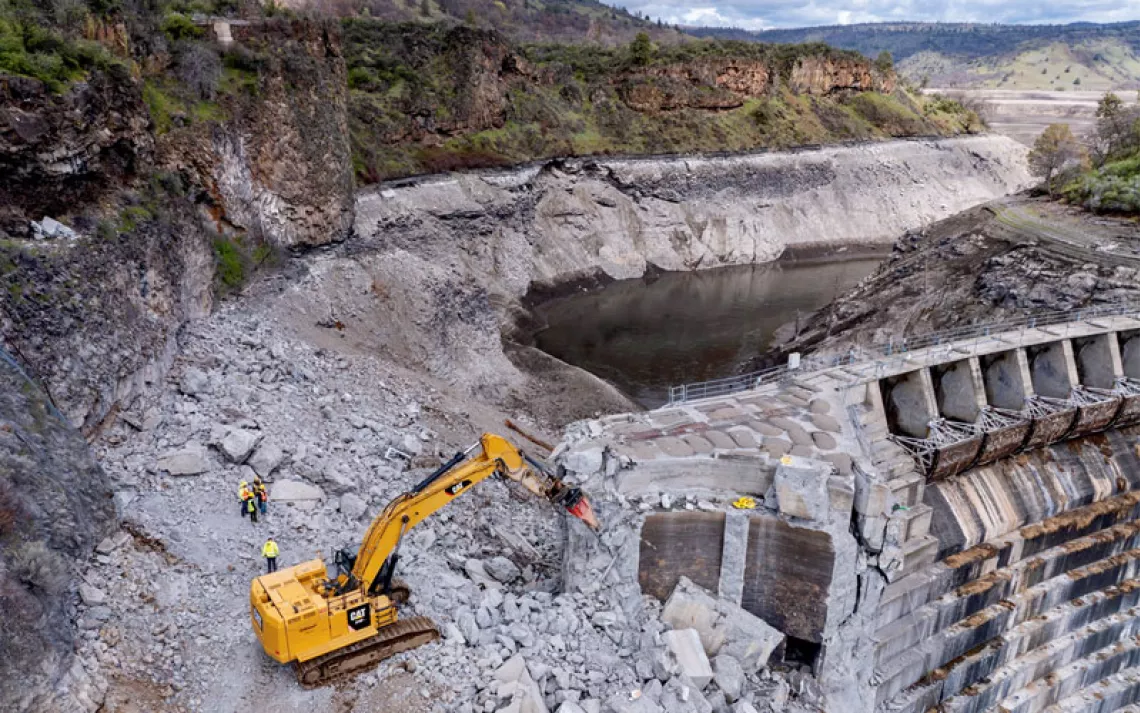Proposed Gold and Silver Mine in Southeast Alaska Threatens Salmon, Bald Eagles, and Local Food Security
Developers seek to overcome Indigenous and environmental resistance by offering perks to local communities

Photo by Hromada/iStock
Lani Hotch's hands run in and out of wool thread, weaving patterns that reflect the lands and waters of her ancestral territory. Outside her window, the Chilkat, a powerful glacier-fed river, churns toward the sea. In Hotch’s backyard, salmon strips are curing in a smokehouse. Hotch was born here in Klukwan, Alaska, a Tlingit settlement with a name that translates to “eternal village.”
The motifs Hotch weaves were passed down from the generations of women who came before her, including a pattern called “the backbone of the salmon.” For the Tlingit people, this symbol represents thousands of years of interconnection with the abundant salmon of the Chilkat watershed. In Tlingit, the name Chilkat means “salmon storehouse.”
Her relationship to the river is what drives Hotch to be an outspoken opponent of the Palmer Project, a proposed zinc, copper, silver, and gold mine directly upstream from Klukwan. The deposit is being explored by a small mining corporation called Constantine Metal Resources. Hotch and others in the community worry that if the mine were to be developed, waste materials from the ore extraction could lead to acid mine drainage—and with it the risk of heavy metals leaching into the watershed. Even small amounts of heavy metals can have catastrophic consequences for salmon.
If the Palmer Project becomes a mine, it’s projected to operate for between 10 and 15 years. For Hotch, risking the health of the local salmon runs for such a short-lived opportunity is misguided. “Where’s the sense in it?” she asks. “The end result is even more poverty, because we’ve always been able to fall back on our salmon.”
Klukwan is not the only community dependent on healthy Chilkat salmon runs. About 35 miles south of the proposed mine is the town of Haines, located where the river meets the Pacific Ocean. Haines and Klukwan are remote communities, bordered by glaciated mountains, temperamental ocean, and a highway from Canada that is often impassable in the winter. Food security is therefore a critical issue for many locals. Groceries are shipped in on barges, and prices are marked up to reflect the 1,100-mile mile journey from Seattle. Luckily, wild fish and game are readily accessible. The most recent survey by the Alaska Department of Fish and Game shows that more than 91 percent of households in the Chilkat Valley consume subsistence-harvested salmon.
Without the salmon runs, it’s hard for Hotch to imagine people continuing to live in Klukwan. During her lifetime, she’s seen a lot of resource-extraction ventures come and go, “but our people don’t have another place to go. This is our home.”
Constantine Metal Resources started exploring the Palmer deposit in 2007. Constantine is what’s known as a ”junior mining company”—that is, an outfit that’s in the business of mineral exploration. Once a deposit has proven value, the junior company sells the majority of shares to investors, while retaining enough equity to see a payout. It’s a high-risk business model, and most fail.
One of the challenges of bringing on investors is gaining social license to operate from nearby communities, says Shannon Donahue, a Haines-based organizer with the Southeast Alaska Conservation Council. But so far Constantine has struggled to get that kind of broad support from area residents. The tribal government in Klukwan has consistently expressed concern about the Palmer Project's potential to pollute the watershed. Local and national environmental groups are also opposed. The Audubon Society, for example, has expressed concern that the mine could disrupt the world’s largest gathering of bald eagles, the Chilkat Bald Eagle Preserve.
But residents in Haines are conflicted on the topic. Constantine has made an effort to integrate itself in Haines; the company offers a scholarship to graduating high school students, contributes money to more than a dozen local organizations, and sponsors popular events like the Southeast State Fair. There are some people in Haines who believe that mining can be done safely, and they’re willing to fight for the high-paying jobs that Constantine has promised, even if those jobs only last for 15 years. Some residents view the debate around the mine as divisive and would rather avoid the conversation altogether.
According to Donahue, there are people in the community who are waiting to see the final plan for the Palmer Project before they take a position “for or against” the mine. “It’s tempting to reserve judgment, but we can't just wait and see, because we don’t need an actual mine to get to the point of having an environmental disaster,” she said. “It’s the exploration process that could start the acid mine drainage.”
The mineral deposit is located in a claustrophobically tight mountain valley, within spitting distance of creeks that flow into the mainstem of the Chilkat. The Palmer Project’s operations are in the path of several avalanche chutes, and the entire region experiences frequent seismic activity. “Given the likelihood of major snowfall, rainfall, avalanche, and seismic events in the immediate area, it would be hard to locate a mine in a more dangerous place for critical salmon habitat,” says Gershon Cohen of Alaska Clean Water Advocacy.
For years, Constantine’s exploration has had minimal impact. Now, however, the project is at an advanced stage of exploration, and the next step in the process is excavating a massive underground tunnel. Donahue explains that this is when things get dangerous. “They’re going to hit water, and they’re also going to hit rocks that contain potentially acid-generating rock and heavy metals,” she says.
In an email response to questions, a Constantine representative responded to concerns about environmental impacts. "The proposed exploration ramp has been designed to avoid intersecting acid generating rock," the company wrote. "Holes have been drilled to determine rock and water quality along the route of the proposed ramp and there is good surface geology exposed above the ramp that indicates that the rocks are mainly carbonate rich basaltic rocks that are not acid generating."
To excavate this waste, Constantine needs a permit, for which the company first applied in 2019. In an effort to avoid developing a substantial water treatment plan, the company proposed injecting acid-contaminated water back underground. The Alaska Department of Environmental Conservation awarded Constantine the permit in July of that year.
Concerned residents and conservation groups quickly contested the state’s decision, pointing out the inevitability of the contaminated groundwater mixing with surface waters that ultimately flow into the Chilkat. In an unusual move, the department remanded the permit to another state agency, the Division of Water. It felt like a small victory for Hotch, Donahue, and other mine opponents.
It’s not uncommon for junior mining companies like Constantine to go bankrupt, and with its permit in limbo, the company’s fortunes were plummeting in that direction. But in spring 2021, Dowa, a Japanese smelting company, bailed Constantine out by purchasing majority shares in the project. With the influx of cash, Constantine has said that it plans to reapply for permits to dig its tunnel in 2022, and to complete exploration in 2023.
Dowa’s new status as majority shareholder has Donahue concerned. “Dowa refuses to engage with the community,” she says. “We’re at a point now where Dowa gets to call the shots, but we’re still dealing with Constantine. And Constantine isn’t necessarily the company that will wind up making the decisions.”
Meanwhile, the tribal government of Klukwan has sent letters to Dowa executives to express opposition to the Palmer Project. Hotch knows that they’ve read the letters, but she said that it feels like Dowa has “turned a deaf ear” to Klukwan. Hotch argues that mining in the Chilkat watershed could impact Dowa’s home country, Japan, which has been the largest importer of Alaska seafood for over 40 years. “They may think that they aren’t risking anything by doing this in our backyard rather than on their island,” she said. ”But they depend on our salmon almost as much as we do.”
The Chilkat River salmon support commercial fisheries across Southeast Alaska, and the Haines harbor is full of fishing boats owned by local families. “Salmon are an important food source, not just for Klukwan, and not just for the Chilkat Valley, but for Southeast Alaska, for the United States, for the world,” Hotch said. “We have an obligation, a responsibility, to take care of them.”
This story has been updated since publication.
 The Magazine of The Sierra Club
The Magazine of The Sierra Club



